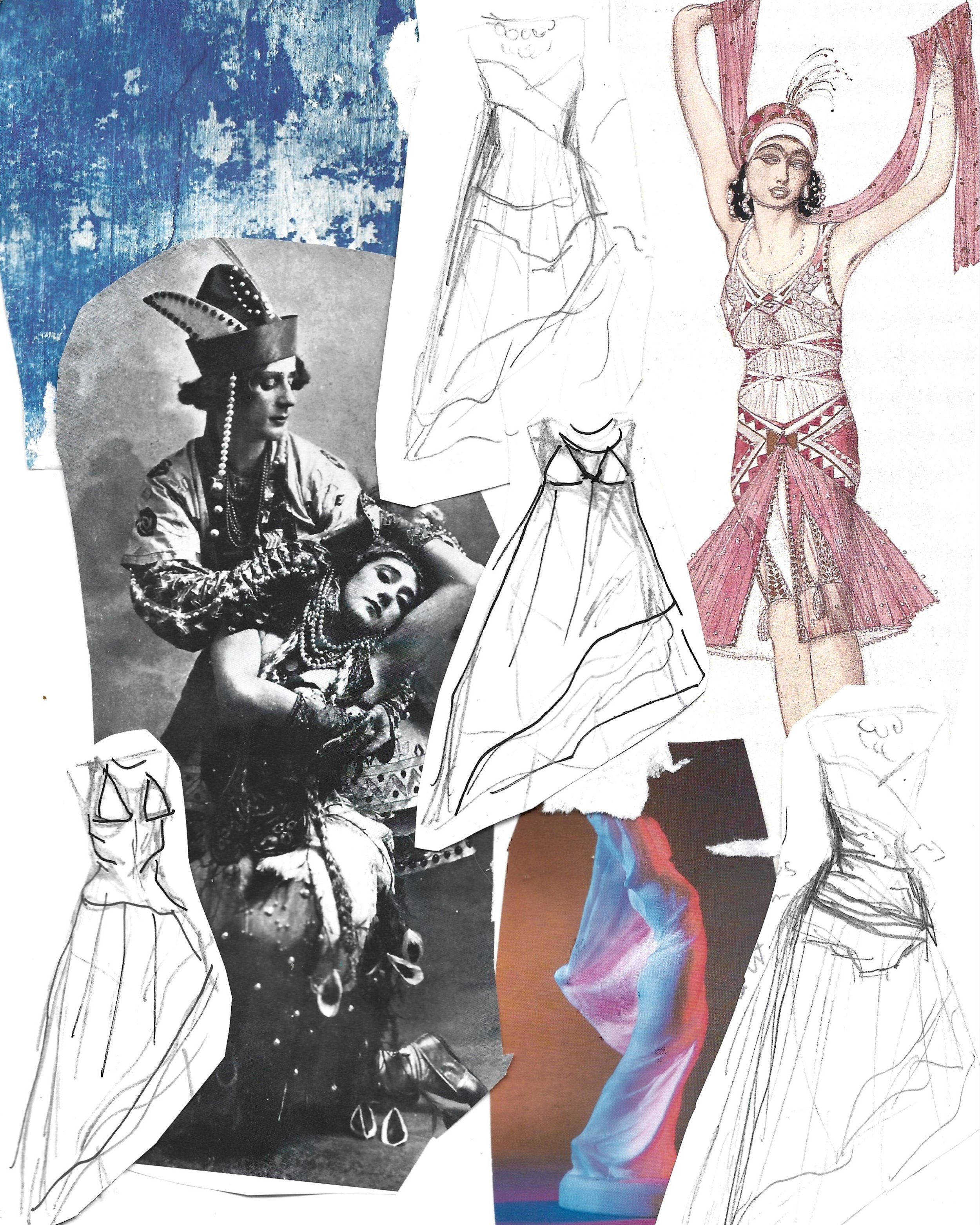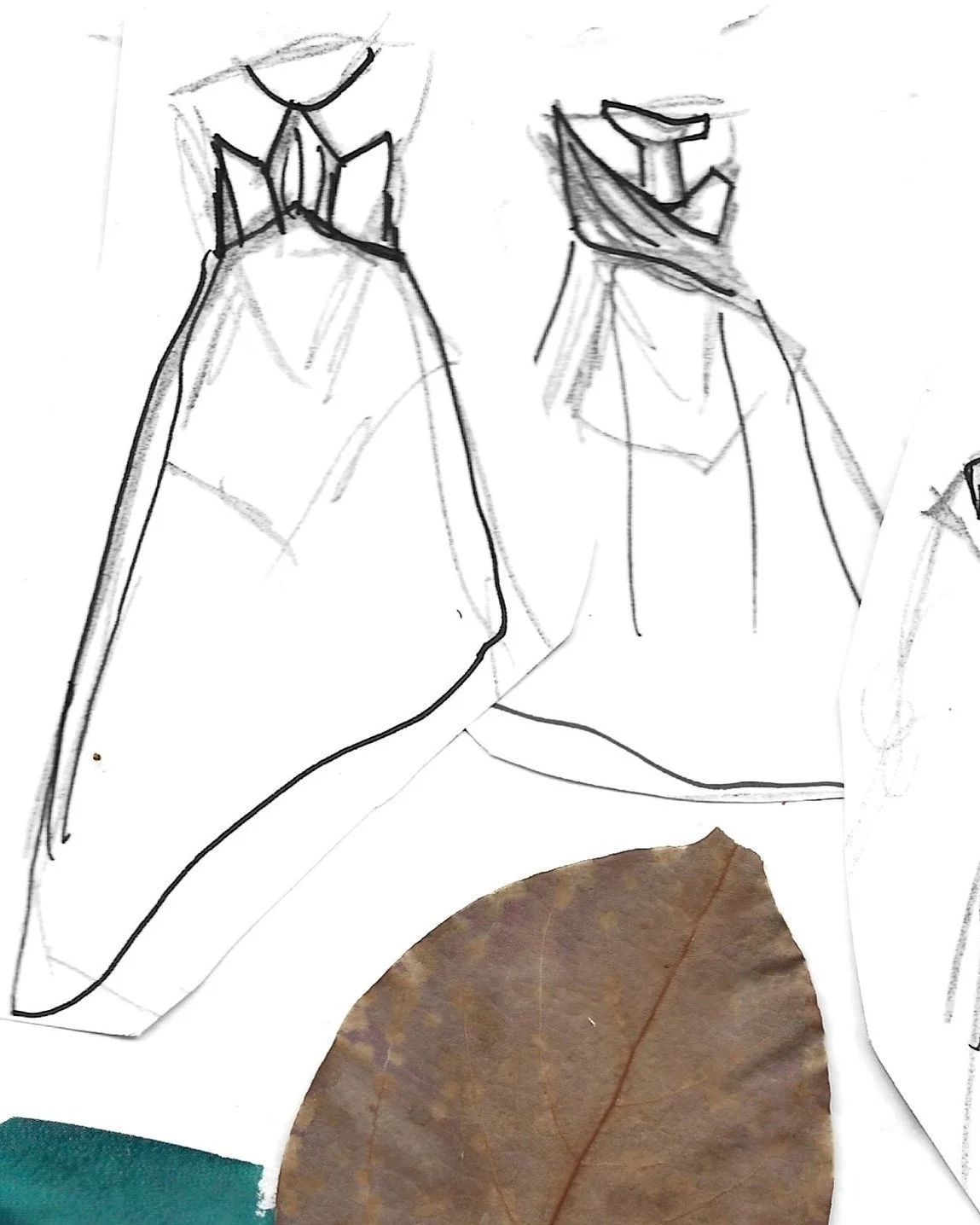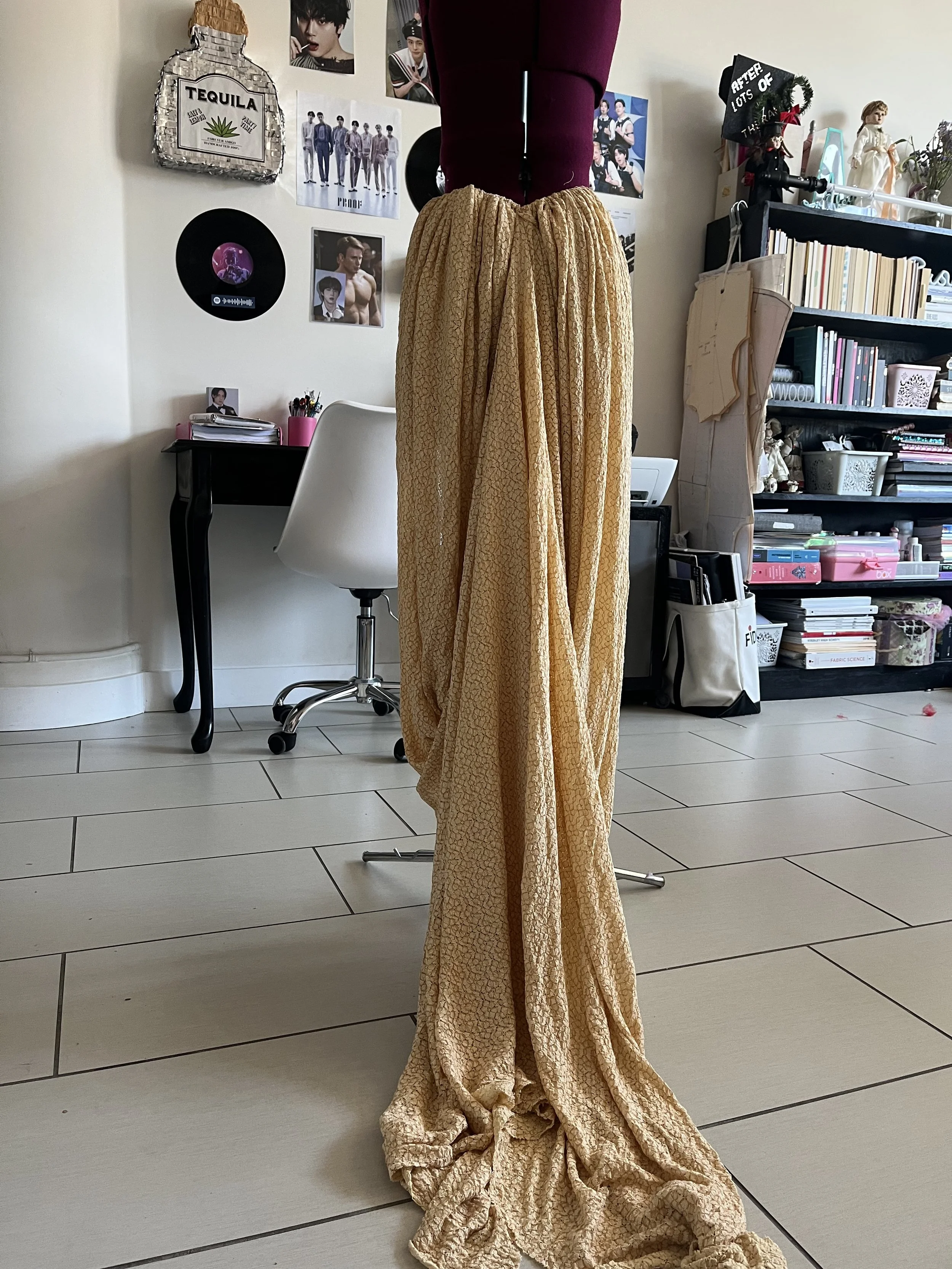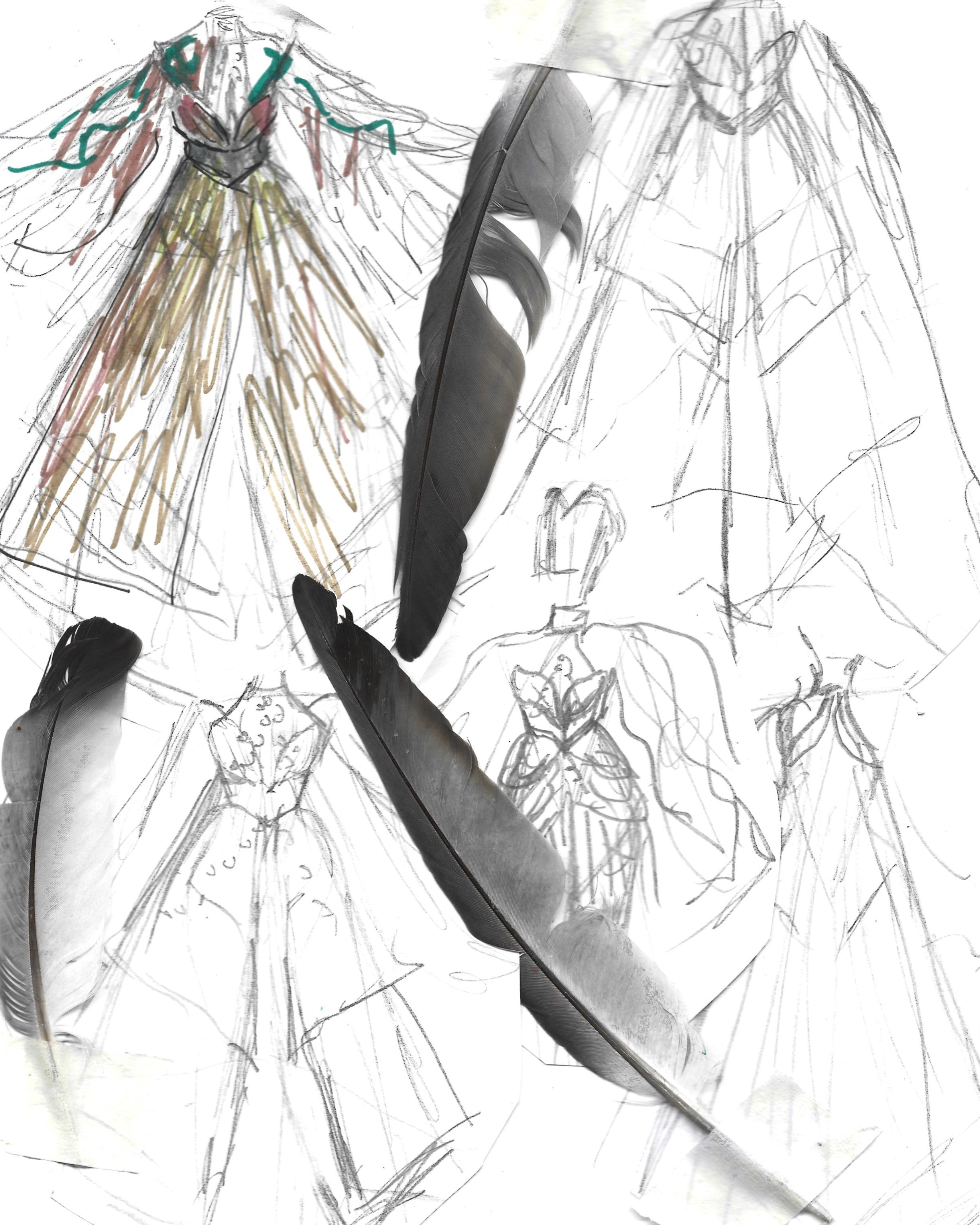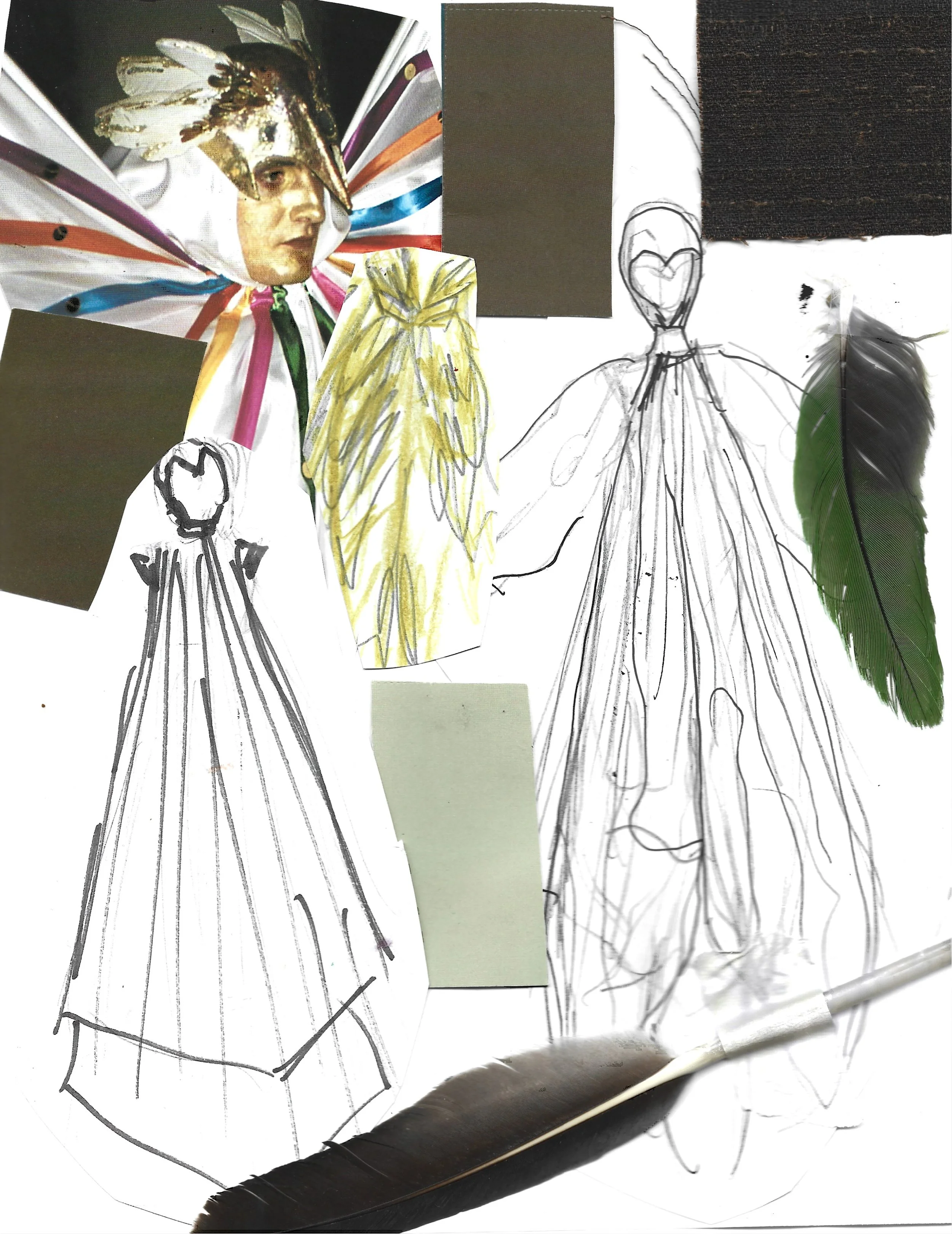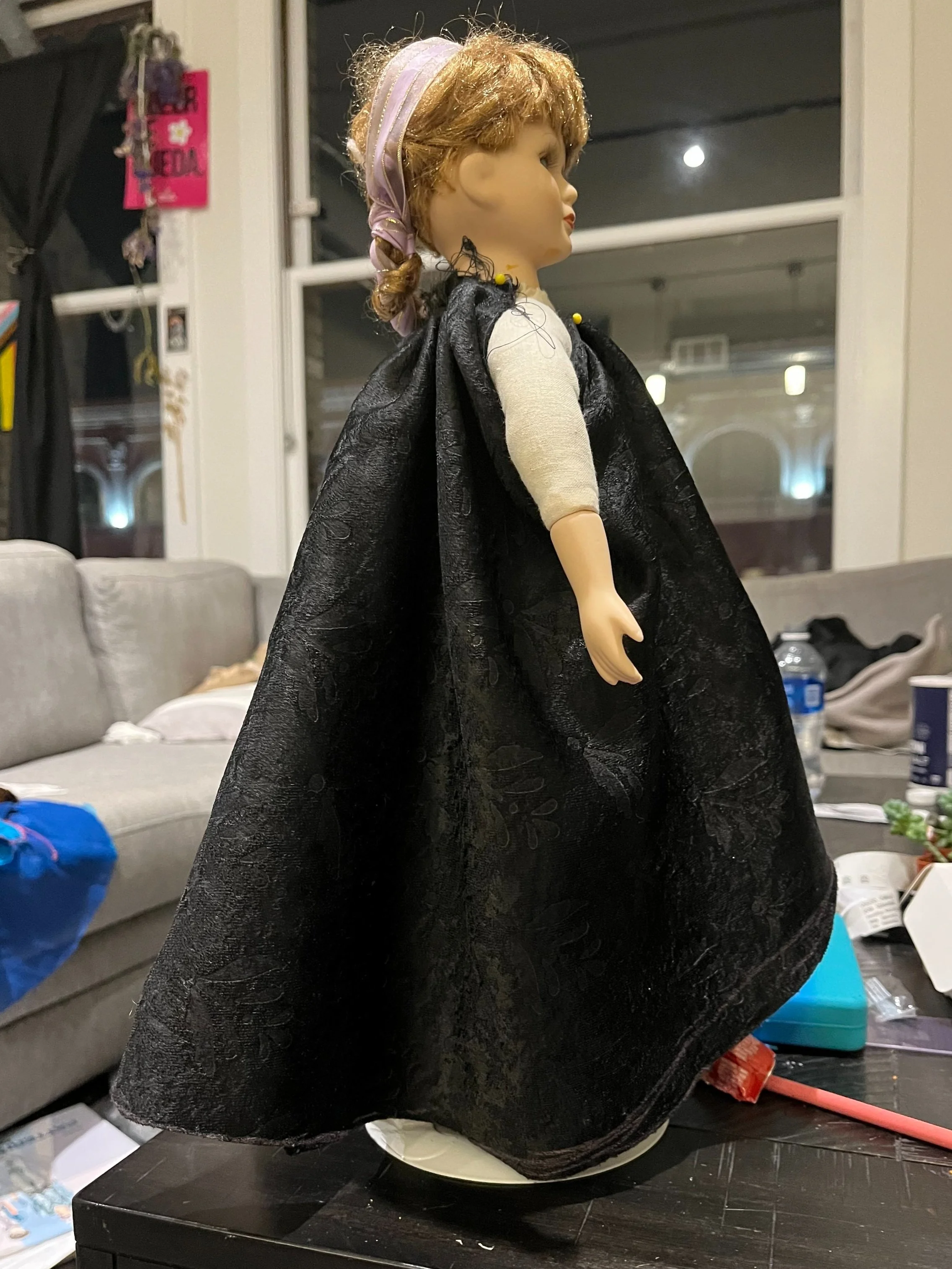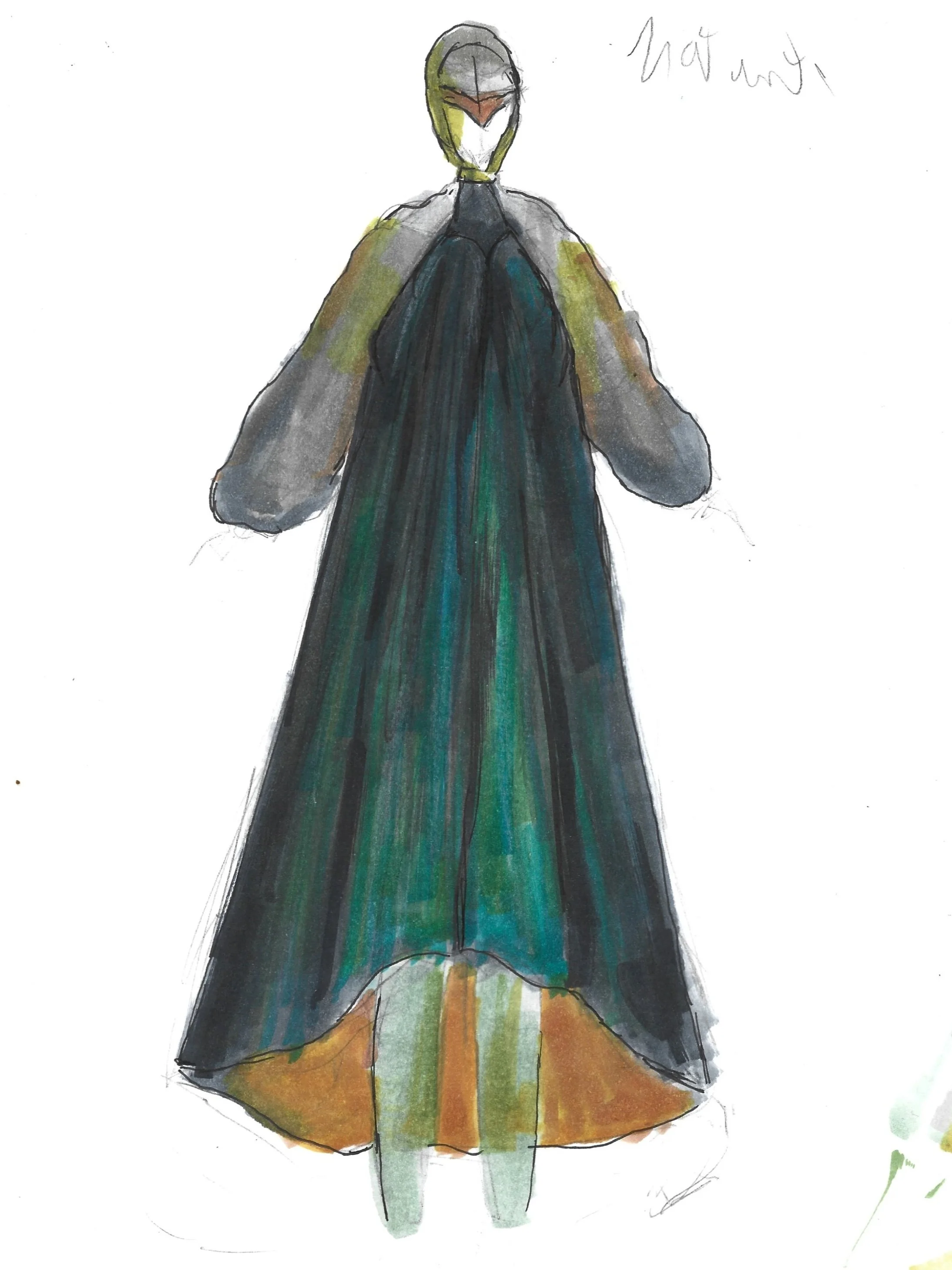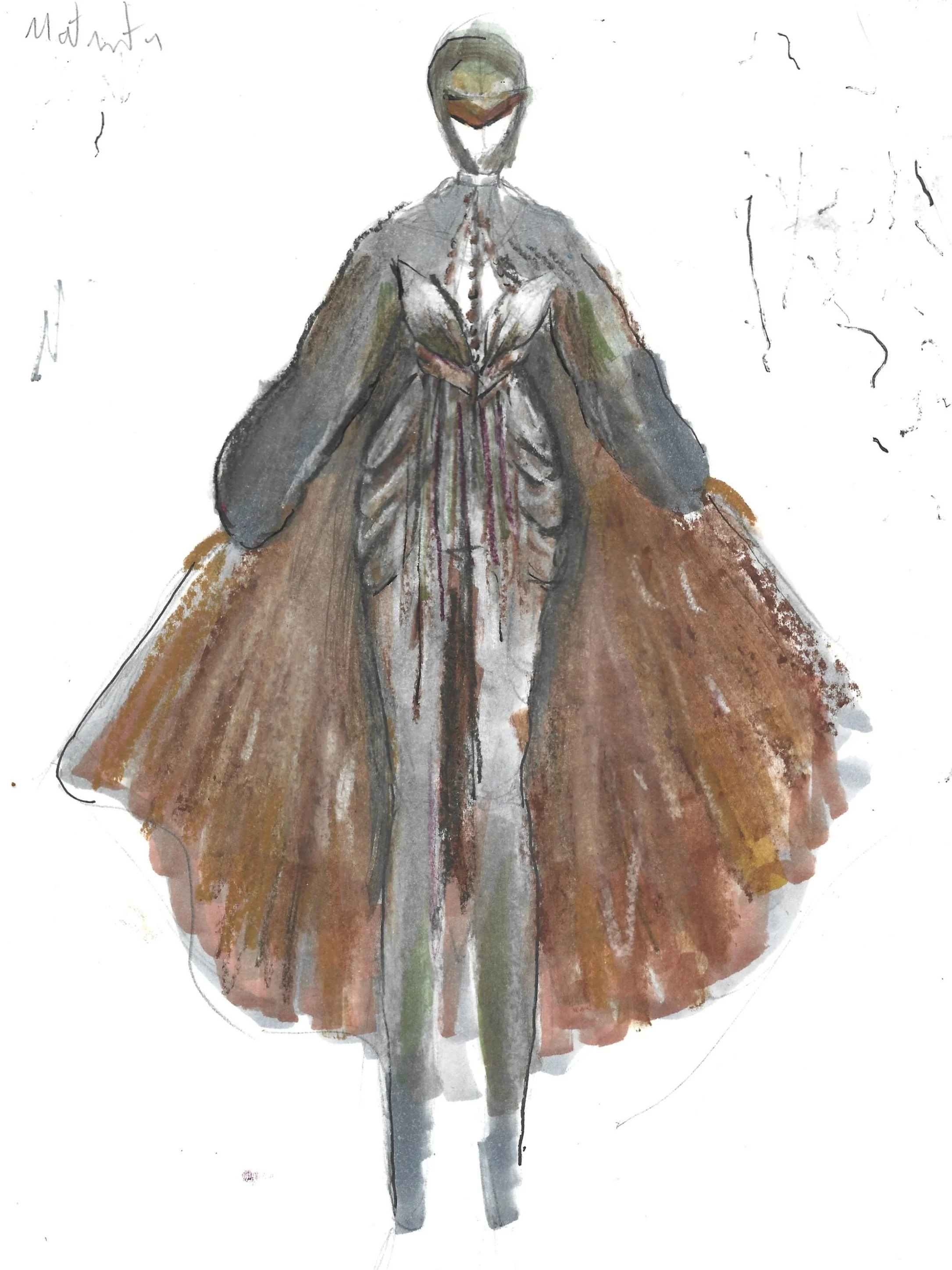
NA CALADA DA NOITE
Brazilian folklore is filled with stories of mysterious beings that habit the night. In “Na Calada da Noite” -which translates to “In the Silence of the Night”- I explore some of these myths. Each of these dance costumes has to phases or ways they can be worn, and are designed to change depending on the light they are under.
In life, Iara was the most talented warrior in her village. But she was killed due to the jealousy of the men around her. Some say she jumped in the river to avoid being killed by her fellow warriors, while others say she was thrown in the water as punishments for killing the man who attacked her. Either way, as Iara’s body hit the river, forces from beyond took pity on her, and through the power of the full moon she was turned into a mermaid. Iara now leaves in the rivers, seducing and killing the men who come to its shores.
Iara









In my search to create a visually rich dance costumes, I took a lot of inspiration from Ballet Russes. This is visible longer and more rectangular fit of the dress, as well as its many trims. The first version of the look has an empire waist skirt and is mostly green. I did this by using lighting and fabrics. The top section of the bodice is more of a green color then the rest, and there is a green underskirt beneath the dresses blue organza skirt.
As Iara falls to the river and begins to transform we see the second version of this look - the mermaid Iara. The transition is achieved by quickly removing the underskirt and pulling down on the dress. This causes the organza skirt to lower, revealing the rest of the bodice and its bluer hues. As shown in the photos, this second version can vary in appearance a lot depending on lighting. With layered pieces of fabric that respond different to each color and highlights on the bodice that are only visible under black light.
Process
During a time of constant night and rain, a giant snake took refuge inside a tree. Trapped by the flood waters that rose below, the animal eventually fell asleep. Some versions of this myth say that, trapped in the cold and darkness, the snake adapted. Its skin became hotter until it caught on fire and it grew new eyes to see in the dark. Other says that once the rain stopped, the snake woke up still in its original form. Feeling very hungry, it slid down to the forest’s still flooded ground. All the snake could see in that darkness were the shining eyes of the animals who had drowned, which carried light of the last time they saw the sun. As the snake ate them, it absorbed their energy, emitting a brighter and brighter light. Eventually, its body became fire and new eyes grew trough it, turning that snake into the Boitata. It became the Boitatá. A fire snake with a body covered in eyes. It is believed that anyone who looks into those eyes will go blind or die.
Boitatá









For this look I took inspiration from ballets such as Scheherazad and La Bayadère. The outfit has a fitted bodice with a 3D scale like effect. I created this by putting two layers of mesh over a base fabric, drawing the scale pattern and then sewing over the drawn lines. After that I cut out one of both layers of the mesh out of come of the squares, and added more shadowing with paint.
The first version of the look has loose fitting pants with some diagonal seams. Those are actually opening, held close by snaps, and when they are pulled, what once was the pant legs becomes a train. At the same time, long tulle pieces that were inside the pant are revealed. This neon tulle glows under black light and can be used by the dancer to create an effect of fire and magic around their body. The underpants, are made of a reflective fabric and have draped details to suggest fire. Like in the Iara look, there are painted details that also shine under black light as well as neon circles to represent the eyes.
Process
Matinta Pereira (or Matinta Perera) is one of the most well-know witches of Brazilain folklore. During the day she has the appearance of an old woman, but during the nights she shapeshifts. In some parts of Brazil it is believed she turns into a type of barn owl, known as “Rasga Mortalha”. In other areas, it is said she turns into a bird, also called Matinta Pereira. Once in her animal form, the witch will scream and sing near houses, keeping the residents awake. According to some, this noise can bring bad luck and even death to those who hear it. The only way to appease Matinta, is to promise her some kind of gift. The next morning, she will show up in her human form to collect it.
Matinta Pereira








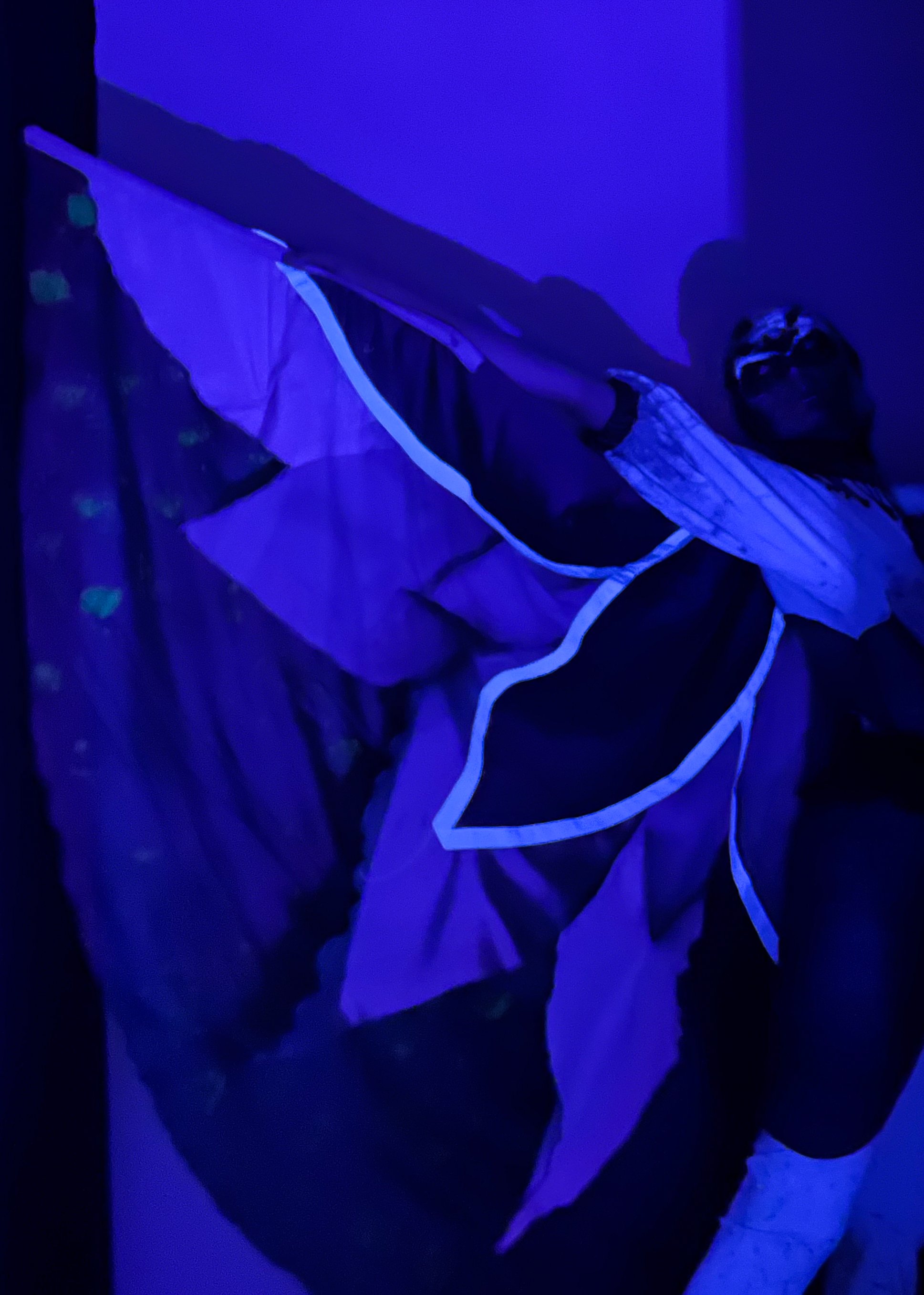
For this look, I once again again took inspiration from the creative and very draped silhouettes of some Ballet Russes costumes. In the first version of the outfit we see Matinta Pereira in her witch form, with a voluminous green cape that has neon leaves painted on it. The cape is closed in the front with snaps and has an attached hood that is not worn at first.
The transformation happens by putting the hood on and opening the cape, to reveal the outfit underneath. Once opened the cape becomes wings, which have a small aluminum stick in the end so they can extend further than the dancer’s arms. The idea for this came from what are sometimes called “Isis Wings”, a prop used in belly dancing. This outfit also uses the black light, this time by having white details. The contour of feather-like pieces in twing, parts of the bodice and the front of the hood all shine under black light to create the silhouette of a bird.


